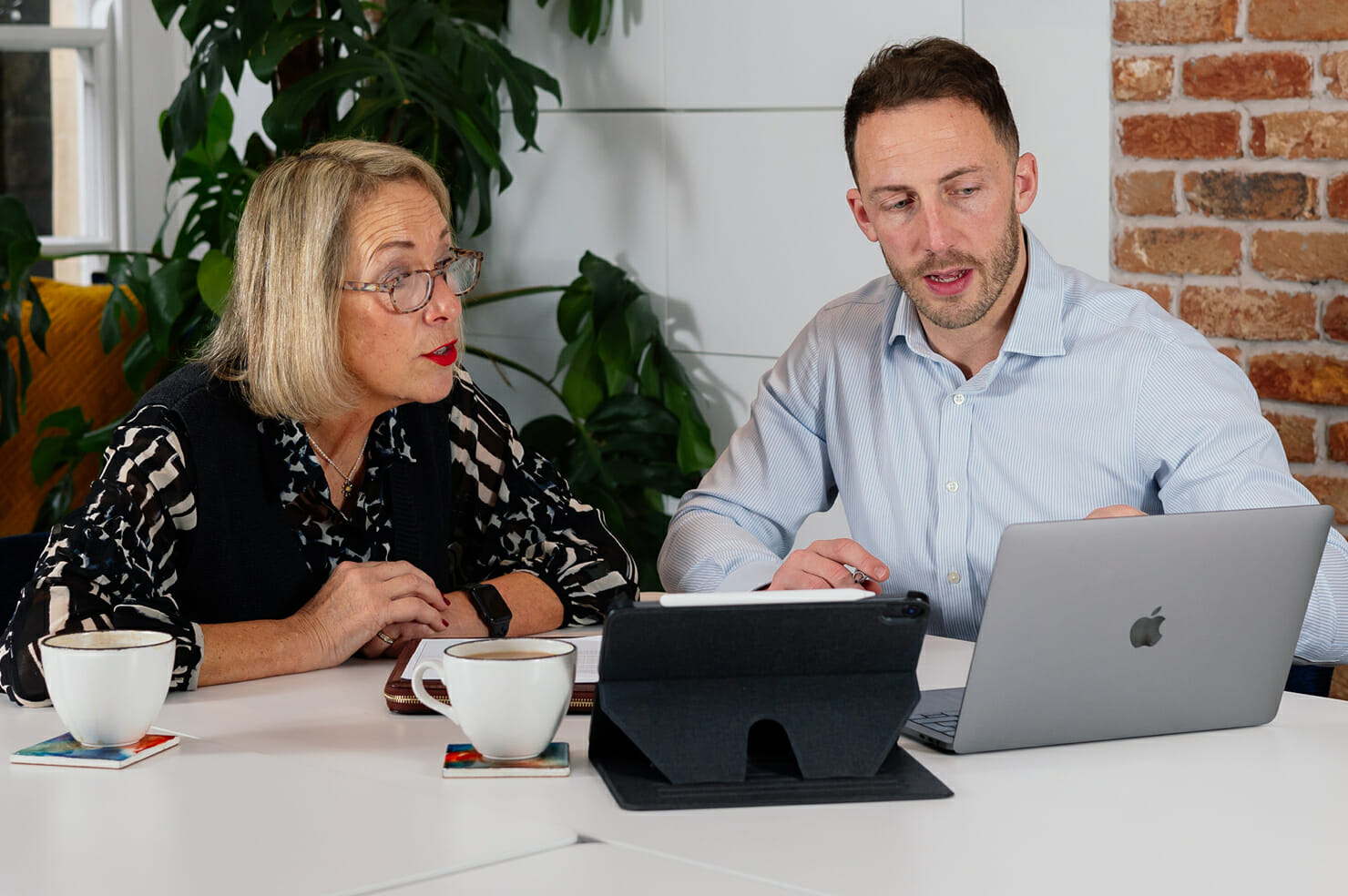Modified on: June 2024
Pension Lifetime Allowance – how to pay less tax
How to avoid the UK pension lifetime allowance
After a lifetime of working hard and saving prudently – what are you left with? A bloody big tax bill!
That’s the situation that many people are finding themself is, as the value of their pensions approaches the lifetime allowance.
In this article, I’m going to explain how the pension lifetime allowance works and outline some simple steps you can take to reduce how much you pay in tax.
What is the lifetime allowance?
If the value of your pension exceeds the Lifetime Allowance, you will pay a tax charge, known as the Lifetime Allowance tax charge.
The standard Lifetime Allowance is currently £1,073,100 (2021/22). Since 2018/19, the lifetime allowance has increased each year with inflation (as measured by the Consumer Prices Index rate the previous September). However, in the March 2021 budget, the Chancellor announced that the pension lifetime allowance will be frozen until April 2026.
There are several scenarios that trigger a Lifetime Allowance test, and thus a possible tax charge. These include taking money out of your pension, transferring your pension overseas and reaching age 75.
What is the lifetime allowance tax charge?
The lifetime allowance is the amount of money you can have in your pension before you pay a tax charge.
The rate of tax you’ll pay will depend on how you withdraw your money from your pensions.
The tax charge is either:
25%, if taken as income (i.e. this is the case if you buy an annuity or take a regular income via drawdown), or,
55%, if taken as a lump sum (i.e. this is the case if you take an uncrystallised fund lump sum)
The charge can be applied in either of the two ways or a combination of both depending on how you take the excess benefits above the lifetime allowance.
Remember, the LTA charge is in addition to income tax charges paid when you withdraw funds from your pension.
What counts towards your lifetime allowance?
The LTA applies to the value of all your pensions. This includes defined benefit (final salary) pensions and defined contribution pensions. The State Pension is not included when calculating your pension values.
The amount that counts towards your LTA will depend on the type of pension you have. Generally speaking:
Defined contribution pensions (personal pensions) are calculated as the fund value
Defined benefit pensions (final salary) are calculated as 20x the income you receive, plus any tax-free lump sum
Additionally, some death-in-service benefits – employee benefits that are paid out as a tax-free lump sum also count towards the LTA.
For more information, read this article on how pension benefits are calculated for the lifetime allowance.
Is it worth exceeding the lifetime allowance?
Where possible, you want to avoid exceeding the lifetime allowance. Otherwise, you’re going to pay the lifetime allowance tax charge.
However, there are circumstances where it may make sense to exceed the lifetime allowance. These include:
Contributing to your workplace pension to receive an employer-matched contribution. Although you will pay a 25% lifetime allowance tax charge, you are effectively getting a 100% return on your contribution (assuming your employer matches the contribution 1:1).
Contributing to a pension to avoid a future inheritance tax bill. Pensions are outside of your estate, so you won’t pay inheritance tax on them. It may be better to pay the 25% lifetime allowance tax charge than the 40% inheritance tax charge.
Contributing to a defined benefit pension. These are very valuable pensions and the income you receive from them is normally worth far more than any tax charge that will apply.
The ‘right’ course of action will depend on your individual circumstances. A broad assessment of your current and potential future financial position will be required to determine if continuing to fund pensions above the lifetime allowance is in your best interest.
Calculating pension values for lifetime allowance
The first step in planning for the LTA is to calculate whether you are at risk of exceeding the threshold. The way you do this is by first calculating the value of all of your pensions now.
You will then need to project what your pensions will be worth when you retire. To do this, you will need to take into account future contributions and reasonable investment growth rates.
If you are still an active member of a defined benefit pension scheme, it will be difficult to predict what your final benefits will be, as they will be linked to your pensionable salary, accrual rate and length of service. Your pension scheme may have an online calculator which will provide a projection, assuming you continue working until a certain age.
In order to avoid a hefty tax charge on your savings, you’ll need to monitor your pensions closely to ensure you don’t exceed the LTA.
When does the lifetime allowance test apply?
There are several scenarios that trigger a test against the LTA. These scenarios are known as ‘benefit crystallisation events’ (BCEs). These are defined by HMRC and there are 13 of them in total.
The most common BCEs include:
Accessing your pension – by taking a lump sum or income
Turning age 75 – and not having drawn pension benefits and/or having some pension funds in drawdown at age 75
Transferring a pension to a qualifying recognised overseas pension scheme (QROPS)
Receiving a lump sum death benefit before age 75
The ‘second test’ at age 75 is particularly tricky. It applies to any pension funds not yet drawn, and any drawdown funds that have grown in value. This means that if you have previously crystallised benefits and designated them to drawdown, these funds will be tested against the lifetime allowance for a second time at age 75. As a result, you may need to pay the lifetime allowance charge a second time, on any growth achieved on the drawdown funds.
For more information, check out the HMRC pension tax manual on BCEs.
Pension lifetime allowance example
Let’s assume that on 6th April 2021, your pension value is worth £1,073,000 (the same as the lifetime allowance).
You decide to withdraw the full 25% tax-free cash from the pension. This is the first time you have withdrawn money from a pension. You receive tax-free cash of £268,250 paid to your bank account. The remaining £804,750 remains invested in a pension drawdown account.
You have effectively ‘crystallised’ the entire pension. The amount crystallised is £1,073,000. As this is the same as the lifetime allowance, you don’t pay a tax charge.
You do not require any withdrawals from the drawdown pension, so leave it invested. The pension grows by 5% per year. By April 2026, your drawdown pot has grown to £1,078,441. You have achieved growth of £273,691.
As you have just turned 75, the drawdown pot is tested again for the lifetime allowance. You have already used up your lifetime allowance in full, so any growth will be taxed.
As a result of investment growth, you now need to pay a lifetime allowance charge of £68,423 (25% of £273,691).
Lifetime allowance protection
If you are likely to exceed the lifetime allowance, you should consider applying for ‘lifetime allowance protection’.
There are two types of protection you can apply for which have replaced previous versions:
Individual Protection 2016
If your pension(s) were worth more than £1m on 5th April 2016, you can apply for Individual Protection 2016.
This protects your lifetime allowance at the value of your pensions on 5th April 2016 or £1.25m, whichever is the lower amount.
You and your employer can continue paying into your pension, however, a lifetime allowance charge will apply on any value in excess of your protected lifetime allowance amount.
The benefit of doing this is that it increases your lifetime allowance from £1,073,100 currently to up to £1,250,000. This can save you up to £97,295 in lifetime allowance tax charges.
Fixed Protection 2016
This protection fixes your lifetime allowance at £1.25m, regardless of the value of your pensions.
The catch is that you can only apply for fixed protection 2016 if you (or your employer) have not added to your pension since 6th April 2016.
You can’t apply for this protection if you have enhanced protection, primary protection, fixed protection or fixed protection 2014.
How to apply for lifetime allowance protection
Click here to apply for individual protection or fixed protection.
How to avoid the pension lifetime allowance
There are various things you can do to avoid, or at least minimise the pension lifetime allowance charge. Here are a few to consider:
Using your ISA Allowance
Instead of paying into your pension, you may want to reallocate the money towards an ISA. You will still benefit from tax-free investment growth, the key difference being that funds will not be tested against the pension lifetime allowance.
This strategy is not suited to those in defined benefit pension schemes as it’s generally better off to remain an active member and pay the lifetime allowance charge.
Use your spouse’s pension
If you’re approaching the lifetime allowance, it might make sense to redirect contributions into your spouse’s pension (this is just one of the four main tax benefits of marriage). This will need to be in their name of course – and that comes with risks of its own (what happens if you get divorced?).
You each have a lifetime allowance, so by using both allowances you can potentially increase the amount in your pensions by 100% before paying any lifetime allowance charge.
Retire early
If you have a defined benefit pension, you could consider retiring early.
Most defined benefit pensions allow you to take the pension before your normal retirement age, however, will provide a lower income.
Remembering that the income amount is what is used to calculate the value of the pension, a lower-income amount may result in avoiding the lifetime allowance charge altogether.
If you’re an active member, you could also enquire about changing your membership. Some pensions allow you to build up benefits on a reduced part (known as 50:50).
Withdraw tax-free cash
A common strategy is to withdraw tax-free cash from the pension. This leaves fewer funds in the pension to grow, reducing the potential second LTA charge at age 75.
You should, however, note that any funds withdrawn from a pension will form part of your estate for inheritance tax purposes – whereas funds held in a pension are outside of your estate for inheritance tax.
Withdraw taxable income
As mentioned previously, your pension is tested against the lifetime allowance when you withdraw tax-free cash and again at age 75. However, there is no lifetime allowance test when withdrawing taxable income.
You may want to consider withdrawing taxable income up to the higher rate of tax (meaning you will pay basic rate / 20% income tax). Why would you do this? Because a 20% income tax charge is less than a 25% lifetime allowance tax charge.
Remember, your pension will be tested again at age 75 – with any growth achieved being subject to the lifetime allowance.
Next steps
Even if you’re not already breaching the LTA now, taking prudent steps in advance is a good idea. It can help avoid a nasty tax surprise at retirement, or again at age 75.
If you want to discuss how we can help you avoid the pension lifetime allowance, you are welcome to schedule an initial financial consultation.
We will use this meeting to discuss your current pension situation and how we can help you avoid unnecessary lifetime allowance charges.
All the best,

James Mackay, Independent Financial Adviser in Bristol
P.s – make sure to download your guide to the pension lifetime allowance.
.
.
Financial Advisor Bristol and Pension Advisor Clifton
Frazer James Financial Advisers is an Independent Financial Advisor Bristol, Clifton.
About us: Frazer James Financial Advisers is a financial advisor, based in Clifton, Bristol. As an independent financial adviser, we’re able to provide independent and unbiased financial advice. We provide independent financial advice, advice on retirement planning, investment advice, inheritance tax planning and insurance advice.
If you would like to speak to a Financial Advisor, we offer an Initial Financial Consultation without cost or commitment. Meetings are held either at our offices, by video or by telephone. Our telephone number is 0117 990 2602.
Frazer James Financial Advisers is located at Square Works, 17 – 18 Berkeley Square, Bristol, BS8 1HB.
This article provides information about investing, but not personal advice. If you’re not sure which investments are right for you, please request advice.
Remember that investments can go up and down in value, you may get back less than you put in.
About The Author
Related news


Get in touch
Schedule a free consultation with one of our financial advisers, or give us call.
0117 990 2602
 Client login
Client login  Retirement assessment
Retirement assessment  Book a consultation
Book a consultation  0117 990 2602
0117 990 2602 











